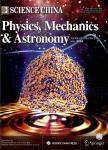Characterization of the charge transport and electrical properties in solution-processed semiconducting polymers
Characterization of the charge transport and electrical properties in solution-processed semiconducting polymers作者机构:State Key Laboratory of Electronic Thin Films and Integrated DevicesUniversity of Electronic Science and Technology of ChinaChengdu 610054China
出 版 物:《Science China(Physics,Mechanics & Astronomy)》 (中国科学:物理学、力学、天文学(英文版))
年 卷 期:2012年第55卷第5期
页 面:786-791页
核心收录:
学科分类:080903[工学-微电子学与固体电子学] 0808[工学-电气工程] 0809[工学-电子科学与技术(可授工学、理学学位)] 080803[工学-高电压与绝缘技术] 08[工学] 080501[工学-材料物理与化学] 0805[工学-材料科学与工程(可授工学、理学学位)] 080502[工学-材料学] 0704[理学-天文学]
基 金:supported by the National Basic Research Program of China (Grant No.2007CB310407) Foundation for Innovative Research Groups of the NSFC (Grant No.61021061) the National Natural Science Foundation of China (Grant Nos.50972023 and 61071028) the International S&T Cooperation Program of China (Grant No.2006DFA53410)
主 题:charge transport electrical properties semiconducting polymers
摘 要:The conventional charge transport models based on density- and field-dependent mobility, only having a non-Arrhenius tem- perature dependence, cannot give good current-voltage characteristics of poly (2-methoxy-5-(2'-ethylhexyloxy)-p-phenylene vinylene) (MEH-PPV) hole-only devices. In this paper, we demonstrate that the current-voltage characteristics can give a good unified description of the temperature, carrier density mad electric field dependence of mobility based on both the Arrhenius temperature dependence and the non-Arrhenius temperature dependence. Fu^hermore, we perform a systematic study of charge transport and electrical properties for MEH-PPV. It is shown that the boundary carrier density has an important effect on the current-voltage characteristics. Too large or too small values of boundary carrier density will lead to incorrect cur- rent-voltage characteristics. The numerically calculated carrier density is a decreasing function of the distance to the interface, and the numerically calculated electric field is an increasing function of the distance. Both the maximum of carrier density and the minimum of electric field appear near the interface.



